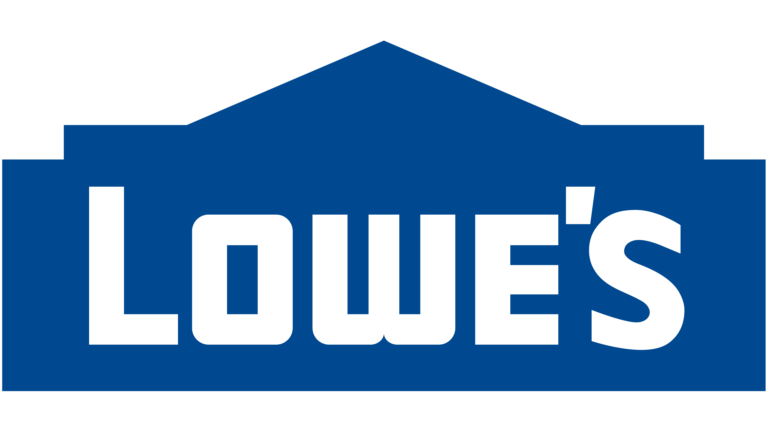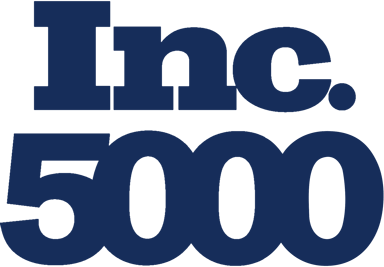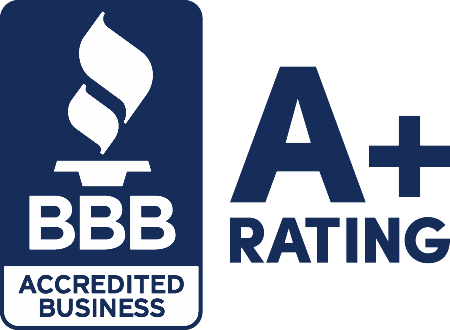What Is Cash Flow?
Cash flow refers to the net amount of cash moving in and out of your business throughout a given period. The time frame is crucial for monitoring cash flow since this metric tends to change quite frequently and dramatically. For this reason, most businesses measure cash flow with monthly data.
What Does it Mean to be Cash Flow Positive?
Operational businesses must always have money in the bank to cover payroll, vendor bills, rent, Internet, and other recurring costs. The funds used for these expenses usually come from at least two sources: working capital that the company has built up over time or recent earnings from sales, receivables, and other forms of revenue.
But having enough money to cover your monthly expenses doesn’t guarantee healthy cash flow. You must time those expenses in accordance with your sales and make sure only to spend specific amounts in specific time frames. Plenty of companies earn more money than they spend in general but spend more money than they earn within short-term intervals (i.e., one month). They end up running out of cash simply because they failed to coordinate sales or receivables with expenses.
Why You Might Not be Cash Flow Positive
Let’s say your company does $20,000 in sales in one month. Your monthly costs amount to approximately $15,000, most of which comes from payroll and inventory. At first, it seems like your company has just made $5,000 in profit.
But then you realize that some of your more prominent clients – who make up the bulk of those sales – still haven’t paid their invoices. A few of your other sales were paid via credit card, and those payments haven’t been processed by the credit card company yet. When the month ends, your actual revenue amounts to just $13,000, with $7,000 in outstanding receivables. So, despite your strong sales, you spent $2,000 more than you earned. In this case, your business would be cash flow negative.
One month of negative cash flow will not spell your business’s demise. However, if this trend persists for several consecutive months, the company could lose upwards of $15,000, or the amount of money it usually spends in one month. When that new client places an order the following month, you might not have enough working capital to pay your employees and purchase the required inventory. The revenue from this large order would only stop the bleeding temporarily.
Why Is Cash Flow More Important Than Profitability?
New entrepreneurs often make the mistake of assuming that “cash flow positive” means the same thing as “profitable.” The two terms have similar definitions, yes, but contrary to popular belief, a business can be profitable without being cash flow positive, and vice versa.
Let’s clear the air on what differentiates each term.
Cash flow positive means having more money going into your business than going out within a specific time frame.
On the other hand, your profit refers to the amount of money you have leftover after covering all expenses, both short-term and long-term. A business can only be technically classified as “profitable” if it has more money on-hand than it spent by the end of the fiscal year. It’s entirely feasible to achieve this status without consecutively maintaining profitability at all times.
In other words, you don’t have to turn a profit every month to turn a profit when the year comes to a close and therefore declare your business as “profitable.” The opposite holds as well: You can turn a profit during one successful month but find yourself on the brink of bankruptcy at the end of the year.
Chances are, if you don’t turn a profit at the end of one month, you’re probably cash flow negative. Thus, a technically profitable business can be cash flow negative at several points throughout the year.
Why Profitability Can be Misleading
Earlier, we mentioned that a profitable business could be cash flow negative at some points of the year. If your company has a profitable month, this doesn’t mean the next month will show the same results. Unlike cash flow, profitability cannot tell you when your cash inflows and outflows transpired. You may have made payroll last month, but what about next month? How much of last month’s profits have reached your bank account?
To achieve real financial stability, you must develop sales and spending strategies that ensure positive cash flow month-to-month. Only cash flow data can show how much working capital you’ll have on-hand in the immediate future.
For these reasons, profitability can mislead you into thinking you have control of your finances. If anything, you should only look at monthly profitability when gauging your recent sales’ actual success, as opposed to assessing the long-term success of your business.
Why Is it Important to be Cash Flow Positive?
As you can see, monitoring cash flow gives you an incomparably informal picture of your financial health. Your income statement can reveal the extent of your profitability, but not how much money you have on-hand to cover regular expenses. Let’s go over some of the more specific benefits of proper cash flow management:
1. Cash Flow Data Gives You Exact Figures
Without cash flow analysis, you’d essentially have to rely on your budget to assess your spending patterns. Most businesses do not calculate exact, to-the-dollar monthly budgets. They merely create estimations of their cash inflows and outflows to get an idea of how much they can afford to spend that month. As your business grows, you begin to see the flaws in relying on rough estimations.
Having exact cash inflows and outflows at your disposal allows you to understand precisely how much money you need to earn and spend to maintain stability. You won’t start or end each month, wondering if you have enough money to continue your usual strategies.
2. You Can Prepare for Cyclical Slow Periods
All businesses experience ups and downs. External factors like seasonality, outdated equipment, and expiring business relationships prevent your cash flow from staying the same every month. It’s simply not possible to eliminate occasional dips in revenue. So, rather than wasting time and money trying to avoid the unavoidable, it makes more sense to just focus on being prepared. Examining cash flow data can show you the exact points of the year when revenue begins to slow down.
Your business’s slow months will become infinitely less stressful when they no longer catch you off guard. You can figure out the right time to start gathering the requirements for business loans or the right time to start putting in some extra hours. Several strategies can help you save more money in anticipation of dips in revenue. Accurate cash flow data can tell you when to launch each one, instead of getting overwhelmed by trying to launch them all simultaneously.
3. Knowing Your Cash Flow Frees Up Your Concentration
No business owner can deny the connection between anxiety and uncertainty. The less you know, the more you worry about the future. However, these fears will decrease significantly when you can safely say you have your cash flow under control. When you aren’t constantly worrying about your financial health, you can finally direct your full attention to what you do best: growing your business. Just think of how much more you could get done each day if your mind wasn’t burdened by anxiety.
Yes, it will likely take time to fix the holes in your cash flow and adequately prepare for future investments. But the sooner you identify your shortcomings, the sooner you can fix them and get back to generating revenue.
4. Being Cash Flow Positive Helps You Access Business Loans
Most financial institutions prioritize cash flow when assessing applications for business loans. If your previous cash flow data denotes strong management, the institution will not attribute the current shortage to pure carelessness. Proper cash flow management makes it easier for institutions to trust you since you’ve already proven your ability to cover operational and growth-related expenses amid ups and downs in revenue. They don’t want to see that you can barely afford to make payroll when the slow months set in.
Institutions look for capitalization as well, or an extra cushion of cash in your bank account. Well, you will build up this cushion naturally if you continue to practice strong cash flow management. Unforeseen expenses can arise at any time, so institutions would like to get the idea that virtually nothing will stop you from paying off debt.
5. Cash Flow Data Shows When You Can Put Money Away
We recently discussed the difference between profitability data and cash flow data. Your profit and loss statement might show a profitable month, but it can’t show you if that profit has reached your bank account. To invest in growth, you need to know exactly how much money gets added to your supply of working capital each month.
Monitoring cash flow puts precise timetables on growth-related initiatives like expanding your team, mass marketing campaigns or purchasing new equipment. When you know how much money flows in and out of your business, you can see exactly how much of the former you can afford to set aside for growth.
How Do You Determine If You’re Cash Flow Positive?
To determine your cash flow status, start by figuring out how much cash you have on-hand at the beginning of the month. This includes cash from all of your business bank accounts. You can probably find your bank balances from the beginning of the month on the last bank statement from the month prior.
Next, it’s time to compile the month’s cash inflows and outflows. But remember, this only includes the earning or spending of cash, as opposed to every time you make sales, purchases, or send invoices.
For example, if you send an invoice in August, but the client doesn’t pay you until September, the revenue does not belong on August’s cash flow statement. The same concept applies to business credit card transactions. If you pay for something with your credit card in August but don’t pay the credit card statement until September, the expense goes on your cash flow statement for September.
Finally, subtract your total cash outflows from your inflows and compare this number with your balance from the beginning of the month. If that number is higher than your opening balance, you are officially cash flow positive.
What Is Operating Cash Flow?
Another way to gauge your cash flow’s stability is through your Operating Cash Flow (OCF). This liquidity-based ratio measures the cash generated by your company’s regular business operations. It compares the cash flowing into your business against the cash currently flowing out.
Your operating cash flow suggests whether your business could produce enough positive cash flow to keep your business afloat and also grow. What if your operational cash flow can’t keep your business chugging along and growing too? This means you might need to get business loans or other financing to grow your business.”
Why You Should Keep an Eye on OCF
Today’s business owner juggles many balls – sales, operations, marketing, advertising, and human resources, to name a few. Why spend time calculating a cash flow ratio anyway?
Here’s why. Your OCF gives you (and your creditors, investors, accountant, or business financial advisor) some insight into the health of your core business activities. If your business doesn’t have a positive cash flow, it’s a sign your company will run into trouble in the long run. As in, you won’t have enough money coming in to cover your expenses and keep your doors open unless you financed your business by borrowing more money or take on investors to bring in extra capital.
Another reason to review your OCF ratio is that it gives you a more accurate reporting of the actual cash on hand available to meet your operational expenses and bills. That’s because it’s based on the actual payments received and not on sales made. True, one big sale could inflate your revenue numbers. However, that sale doesn’t make a difference to your business financially. At least not until you get paid.
Where to Get the Numbers to Calculate Your OCF Ratio
You’ll find all the information you need to calculate your operating cash flow right in your financial statements and accounting records. Your cash flow from operations might show up on your Cash Flow Statement. If not, you’ll find instructions on how to calculate it further down the page. And you should find your current liabilities in your financial statements. If not, check your accounting records.
How Do You Calculate Operating Cash Flow?
Operational cash flow gets calculated using an equation. It’s simply Cash Flow From Operations divided by Current Liabilities. This calculation generates a number that represents your operating cash flow.
Operational Cash Flow = Cash Flow From Operations/Current Liabilities
In simple terms, the OCF calculation uses your operating income before depreciation, minus taxes, and adjusted for changes in working capital. Any other activities get excluded or separated from the Operating Cash Flow calculation. These include financing activities such as issuing dividends, issuing or purchasing common stock, issuing or purchasing debt securities. They also include investing activities like capital expenditures or acquisitions.
The OCF formula also uses your current liabilities. Include any short-term debt, accounts payable, and any accrued liabilities in your calculations.
Calculate your OCF ratio using either one of these formulas for Cash Flow From Operations. For most purposes, use the general OCF formula as it’s simpler to calculate.
General Cash Flow from Operations Equation
Don’t let the length of this equation scare you off – it isn’t challenging to complete.
Operating Cash Flow (OCF) = Operating Income (revenue – the cost of sales) + Depreciation – Taxes +/- Change in Working Capital
General Long Form Cash Flow from Operations Equation
Operating Cash Flow = Net Income + Depreciation + Stock-Based Compensation + Deferred Tax + Other Non Cash Items – Increase in Accounts Receivable – Increase in Inventory + Increase in Accounts Payable + Increase in Accrued Expenses + Increase in Deferred Revenue
Parts of the Formula
Operating Income: The profit from your operations, after operating expenses like wages, depreciation, and cost of goods sold (COGS)
Depreciation: The Oxford English Dictionary defines depreciation as a reduction in an asset’s value over time, particularly to wear and tear.
Changes in Working Capital: Working capital has a simple definition. It’s just current assets minus current liabilities. And changes in working capital refers to the difference in the net working capital amount from one accounting period to the next.
An Example of an Operating Cash Flow Ratio
Let’s say your business generates $300,000 cash flow from operations. And you have $240,000 in current liabilities. Your operating cash flow ratio is 1.25. This means that based on your current cash flowing into your business, you could cover your current liabilities 1.25 times. The cash flowing into the business will more than cover the money flowing out. You’ll even have money left over.
Another way to look at it is that for every dollar of money you owe, you’re bringing in $1.25. And either way, that’s good. What if you want to expand your business? Is an operating cash flow ratio of 1.25 enough to do so? Maybe not. It might benefit your business to borrow money for capital expansion. This could let you grow your business faster.
Operating Cash Flow Ratios Below 1.0
What does it mean if your cash flow ratio falls below 1.0? This suggests a cash flow issue. In other words, you don’t have money coming in to cover your short-term liabilities. Your business will need to increase the incoming cash or borrow to cover the shortfall. However, borrowing in this situation could be tricky because creditors don’t like to see an OCF ratio of less than 1.0. And keep in mind that borrowing money as a solution to short-term cash flow woes won’t help your business in the long run.
The Difference Between Operating Cash Flow and Net Income
At first glance, operational cash flow and net income are very similar, yet the two aren’t the same.
Net income gets calculated as business revenue minus expenses, taxes, and the cost of goods sold. On the other hand, your operational cash flow figure gets calculated as the cash generated from your business operations, less the current liabilities. The key difference has to do with the timing. While net income focuses on revenue, the cash that “revenue” generated might not yet have been collected.
Keeping an eye on your OCF ratio regularly lets you see patterns and trends early on, giving you a chance to quickly address cash flow issues. And creditors and investors look at operational cash flow to get a clear picture of a business’s current financial health. Sales, revenue, and accounts receivables are indeed essential business figures. Yet they don’t help your business until they turn into operating cash. After all, you can’t pay bills with money you don’t yet have in the bank.
Common Causes for Cash Flow Problems
Some of the most common causes of cash flow problems include:
- Extending credit to clients who pay too late or sporadically
- Sending out invoices filled with errors or sending them too late
- Paying vendors and other suppliers too fast instead of getting longer terms
- Holding on to surplus stock or inventory for too long
- Forgetting the relationship between receivables and payables
Common Habits That Lead to Cash Flow Problems
Sometimes, cash flow issues are attributed to the everyday habits of inexperienced entrepreneurs. These habits tend to develop early on. Since they don’t immediately drive the business into the ground, the entrepreneur just continues running the business in this manner.
However, a glance at cash flow data would reveal that the business is losing more money than earning. Here are three common habits that lead to cash flow issues:
1. Associating Revenue with Success
It’s only natural to assume that an increase in revenue means the business is doing well. But how much did you spend to earn that revenue? How long did it take for the revenue to enter your bank account? How much debt did you accrue in that period?
An inexperienced entrepreneur might be so focused on revenue that they completely forget about these other metrics. But if they are not addressed, all the world’s revenue won’t keep the business alive. That’s why it’s so important to monitor cash flow. If your cash flow is in good shape, your business is in good shape. On the other hand, revenue does not account for expenses, the length of your sales cycle, etc.
2. Not Sticking to a Budget
Maintaining a steady budget is not easy. After all, many business leaders subscribe to the timeless saying, “You’ve got to spend money to make money.” They might view budgeting as an obstacle to business growth. As a result, they take on too much debt, hire employees too early, and ultimately fail to understand that when you earn more money, you have to spend more money as well.
3. Not Having a Cash Flow Cushion
Most small businesses only have about a month’s worth of cash flow saved up. Every business leader has a reason for this mistake. Maybe they have poor credit and don’t believe they have access to advantageous financing options. Maybe their businesses are barely making enough money to cover monthly expenses, let alone put extra money away.
But as we mentioned earlier, cash flow problems are inevitable. Business leaders cannot get accustomed to operating without a cash flow cushion. When the business is on its last legs, finding additional financing is extremely difficult, if not impossible.
How To Employ the Best Strategies for Improving Cash Flow:
There is always more you can do to smooth out your cash flow. The first solution you implement should be based on the cause of your cash flow issues. From there, you can choose the solutions that involve the kind of effort you are most comfortable sacrificing.
Here are 13 surprisingly easy ways to smooth out your cash flow:
1. Create a Small Business Cash Flow Forecast
A cash flow analysis helps you understand how money moves in and out of your business. And this helps you to make better decisions about invoicing and scheduling payments.
Next, use your cash flow analysis to create a cash flow forecast or projection. This is an estimation of how you expect money to move through your business quarterly, semi-annually, or annually.
A cash flow forecast also helps you make more informed decisions around hiring new staff, investing in growth opportunities, and applying for small business loans. Try using a free cash flow tool to get started.
2. Lower Credit Card Payments
The debts with the highest monthly payments typically carry the highest interest rates. You should therefore focus on eliminating these debts as quickly as possible. So, instead of making minimum payments, see if you can afford to pay a little more each month.
3. Don’t Order Too Much Inventory Too Early
Businesses often spend more money than they make by letting inventory sit on their shelves for too long. Since demand is so hard to predict, they might order massive quantities of items (or lots of different items) to avoid potentially disappointing customers. This usually results in items going unsold for months on end. During this time, the business continues spending money while earning nothing on the unsold items.
You can prevent this common scenario by ordering inventory shortly before it gets sold. Several software tools forecast demand based on historical data. Another solution is a business line of credit, which brings us to the next section:
4. Get a Business Line of Credit
A business line of credit is like a business credit card but with more spending power and lower interest. It’s a wonderful tool for businesses that deal with occasional dips in revenue or businesses frequently presented with unexpected but highly lucrative opportunities.
For example, let’s say you experience an unexpected spike in demand for a specific item. A business line of credit would allow you to order the extra inventory right before you sell out.
Also, most business lines of credit are revolving. This means that once you pay back what you owe that month, the amount becomes available again. So, if you pay off your full balance, you don’t have to go through the trouble of applying for a loan whenever you need extra cash.
5. Spread Out Your Monthly Bills
Does your business pay rent, suppliers, utility bills, and payroll all on the same week – or even day? Doing so could lead to anxiety for you and financial problems (like NSF charges) if your sales didn’t cover it.
The solution? Don’t set all your payments on the same day. Instead, look for opportunities to spread them out through the month.
Start by listing all your payments. Next, split them into groups – critical payments (rent or mortgage, payroll), necessary payments (think utilities, taxes), and flexible payments (suppliers).
Stagger these three groups throughout the month, prioritizing group one. Spreading your payments out means you’ll (hopefully) have more money available to pay the bills scheduled for later in the month.
6. Budget Small Business Taxes Monthly, File Them Quarterly
If you’ve been in business for over a year, you’ll pay estimated taxes based on your previous year’s income. And though you’ll likely file your estimated taxes each quarter, consider including your small business taxes in your monthly budget.
Set aside 1/12 of your estimated annual taxes each month. That way, you won’t have to scramble to find the cash to pay your taxes each quarter.
7. Even Out Your Seasonal Cash Flow
Landscaping companies, garden supplies, and snow removal services are just some small businesses that face seasonal cash flow challenges.
When your income depends on the weather and season, it’s even more important to take steps to smooth and strengthen your cash flow. After all, you’ll still have bills to pay even when your income slows down. Yet knowing you’ll have a slow period gives you the chance to take steps to prepare now.
Some options for seasonal businesses to improve cash flow include:
- Offering an installment payment plan at a discount. For example, offer 20% off for customers who pay for a full landscaping package in December.
- Diversify your services and products by expanding to include non-seasonal yet related items, such as Christmas light installations or outdoor holiday decorating services.
- Launch or expand your website to include passive income streams such as advertisements, affiliate income, or digital products
8. Automated Invoicing Systems
Creating, scheduling, and sending invoices are time-consuming, manual tasks. An automated invoicing system, however, takes care of all three. You can send out invoices immediately after making a sale, send reminders shortly before they are due, and spread out your invoices throughout the month to maximize profitability. Lots of businesses receive all of their payments at the end of the month. Most of this revenue is then spent on monthly bills instead of getting plugged back into the business.
Besides, when you spend less time on manual tasks, you gain more time for revenue-generating activities, like making sales.
9. Offer Discounts for Timely Payments
Another way to shorten your accounts receivable time frame is by offering incentives. Consider adding a small discount to your pricing guide, such as 5% for payments made within seven days of your invoice. You could also offer a 3% discount for payments made within 30 days.
10. Encourage Direct Debit Payments
Encourage your regular customers to set up a direct debit payment. This means the payment for your regular monthly invoice gets debited automatically from their chosen bank account. It’s another easy way to increase your regular monthly income.
11. Do More With Fewer People
For many businesses, payroll is their most significant expense. Luckily, you have several options for trimming this expense. However, all of them revolve around the same concept, and that’s hiring less full-time employees. Instead, you could outsource long-term projects to independent contractors or simply do more with fewer people. This means training current employees to handle additional tasks for a little extra money. The salary increase would undoubtedly cost less than hiring new employees.
12. Take Milestone Payments for Larger Projects
Another option to help small businesses create a smoother cash flow involves what we like to call “milestone payments.” These payments help cover your monthly expenses for projects that span more than 60 days.
When you estimate the project length, consider including one or two milestone payments in the middle of your work. This depends on how many months you anticipate the work will take. For example, a 60-day project could include a milestone payment in the middle. So you might request a 25% retainer, 25% milestone payment due on day 31, and the remaining 50% of your fee due on completion.
13. Offer Discounts for Regular Service Contracts
Do you struggle with cash flow in your service business? If so, consider offering discounts for regular service contracts. At every service call, offer a 20% discount on an annual service contract if the customer signs up on the spot.
Annual service contracts that come due throughout the year can provide you with ongoing monthly income. And they allow you to strengthen the relationships with your customers. Maintenance contracts, committing to seasonal tune-ups, and periodic audits are just some of the ways to create regular service contracts to smooth out your cash flow.
Becoming Cash Flow Positive Takes Time, But It’s Worth It
The importance of cash flow reflects the difficulty of mastering it or becoming cash flow positive. It’s entirely feasible to restructure your cash flow completely, but it won’t happen overnight. Businesses usually have to experiment with several of the strategies mentioned above before finding out which one has the most significant impact on cash flow.
This epic journey begins with identifying what’s hurting your cash flow. Learning this information isn’t comforting but understanding the problem makes the solution much, much clearer. Trust the data, for it will eventually point you in the direction.













